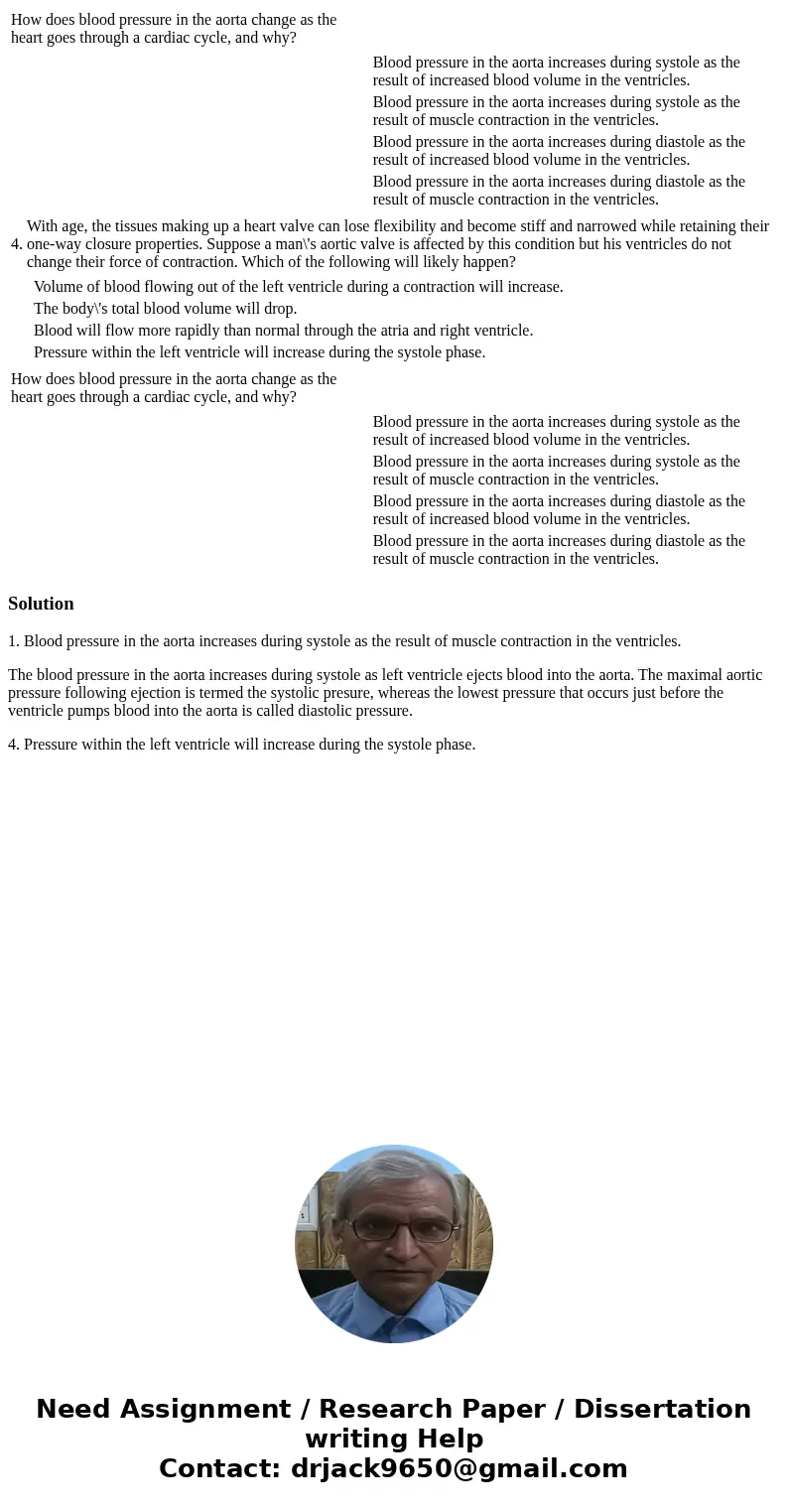| How does blood pressure in the aorta change as the heart goes through a cardiac cycle, and why? |
| | Blood pressure in the aorta increases during systole as the result of increased blood volume in the ventricles. | | Blood pressure in the aorta increases during systole as the result of muscle contraction in the ventricles. | | Blood pressure in the aorta increases during diastole as the result of increased blood volume in the ventricles. | | Blood pressure in the aorta increases during diastole as the result of muscle contraction in the ventricles. | |
| 4. | With age, the tissues making up a heart valve can lose flexibility and become stiff and narrowed while retaining their one-way closure properties. Suppose a man\'s aortic valve is affected by this condition but his ventricles do not change their force of contraction. Which of the following will likely happen? |
| | Volume of blood flowing out of the left ventricle during a contraction will increase. | | The body\'s total blood volume will drop. | | Blood will flow more rapidly than normal through the atria and right ventricle. | | Pressure within the left ventricle will increase during the systole phase. | |
| How does blood pressure in the aorta change as the heart goes through a cardiac cycle, and why? |
| | Blood pressure in the aorta increases during systole as the result of increased blood volume in the ventricles. | | Blood pressure in the aorta increases during systole as the result of muscle contraction in the ventricles. | | Blood pressure in the aorta increases during diastole as the result of increased blood volume in the ventricles. | | Blood pressure in the aorta increases during diastole as the result of muscle contraction in the ventricles. | |
1. Blood pressure in the aorta increases during systole as the result of muscle contraction in the ventricles.
The blood pressure in the aorta increases during systole as left ventricle ejects blood into the aorta. The maximal aortic pressure following ejection is termed the systolic presure, whereas the lowest pressure that occurs just before the ventricle pumps blood into the aorta is called diastolic pressure.
4. Pressure within the left ventricle will increase during the systole phase.

 Homework Sourse
Homework Sourse